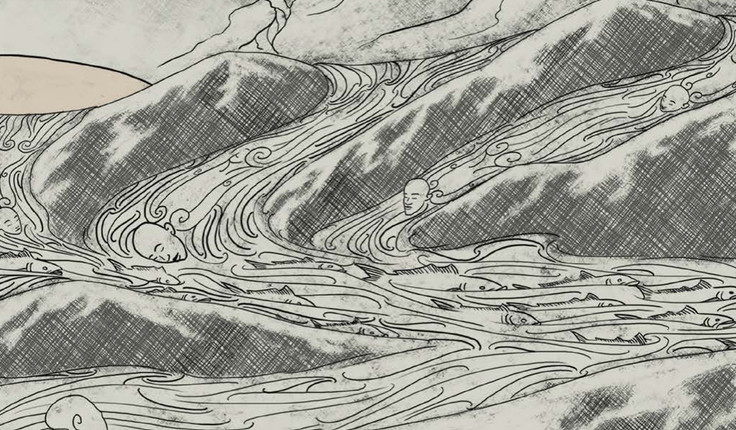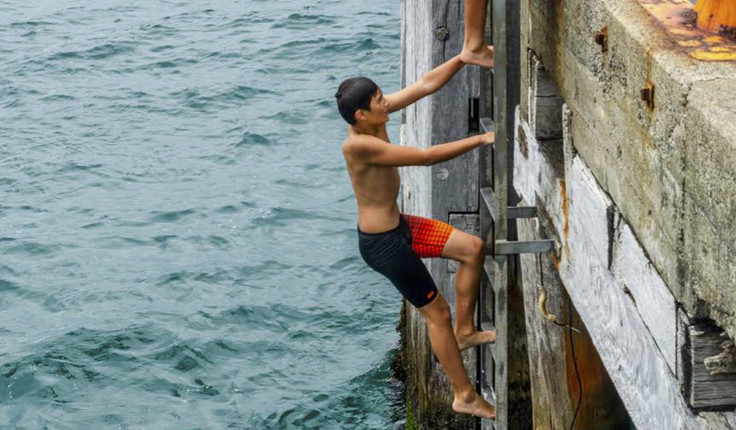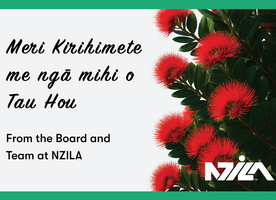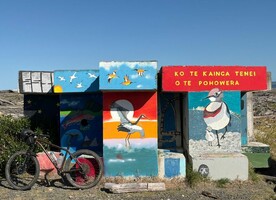News
Kia Whakanuia Te Whenua - A Book Review
Posted 05 02 2021 by Renée Davies
in News

5 stars - a must read and regular dip into
Kia Whakanuia Te Whenua
Inspired by a concern from the protection and management of the whenua (land), Kia Whakanuia Te Whenua is a collection of thematically arranged essays that aim to explore relationships and responses to the whenua. It is heartening that the kōrero presented in this work is so much more than that and most definitely exceeds expectations. It challenges the reader to consider our experiences of the landscape through different cultural paradigms with the majority of those presented being deeply rooted in the intricate details of our own place – Aotearoa.
The tone is set with the powerful statement ‘Ihumatao’ by eminent kaumatua Haare Williams. His words remain as a pulsating guide through the diverse prose, personal thought and imagery that ensue. These words speak a truth that lives beyond the pages of this book and highlights the challenge to us all as we step out from them with a new way of seeing the world – “When”? The resounding sentiment put forward by the contributors is that time being - Now!
The best essay collections bring together the variety and innovation that emanates from the edges of disciplines. Kia Whakanuia Te Whenua does this persuasively with an eclectic and innovative range of practitioners from artists, historians, educators, ecologists, geologists, poets, architects and landscape architects. It breaks down, re-shapes and questions relationships and understanding. Each chapter conveys an inspiring diversity of intellectual and experiential insights from a Māori world view.

A worldview is the set of beliefs about fundamental aspects of reality that ground and influence our perceiving, thinking, knowing and doing. To fully appreciate and even begin to understand the spiritual and material aspects of a different world view, it is necessary to engage in an active exchange with both people and landscape and this is best achieved by engaging all our senses. As Alayna Renata eloquently expresses in her exploration of the ‘Spirit of Landscape’, “I do not mean knowledge like we know it as a Western construct, but rather knowledge that is held through oral traditions and practices; lived and living knowledge”. What emerges from this collection is a fully immersive sensory experience that is both emotional and informative – and that in itself is refreshing. The celebration of our human-ness so often deliberately missing from Western academic works is raised to new heights in these essays, recalibrating how we think and behave. Giving us permission to feel.
Globalisation today is predominantly based around the spread of Western knowledge, values and practices. Non-Māori content is therefore rightly limited within this book and balanced by a strong Indigenous presence. This grounds the discussion within the critical essence of mātauranga Māori. With limited exceptions, the essays are consistent with the core exploration. They summon those that are professionally entwined with the whenua on a daily basis to embrace other world views and to see with new eyes, but also to touch, taste, smell and above all else - listen. This was highlighted within the contagious passion of Rachel Shearer that delved deeply into the often overlooked audial aspect of landscapes; “Listening is the connective point between all elements. Sound is a harbinger of life and change”.
Kia Whakanuia Te Whenua is an appropriately challenging statement that is long overdue. It exceeded my expectations and sits alongside my other all-time favourite William Cronin edited collection, Uncommon Ground – Rethinking the Human Place in Nature. Like that seminal and (at the time) controversial, re-evaluation of environmentalism, Kia Whakanuia Te Whenua represents a place in time and the continuation of a journey that must recognise other models of reality and wisdom. In the words Anne Salmond, “Indigenous plants, animals and landscapes have worked out ways of living together that have much to teach us. While listening to each other, it is imperative to listen to the land”.
Given the global challenges we face in 2021, this thoughtful collection is well timed to raise awareness of the legitimacy of not only physical but spiritual relationships with the whenua. It demonstrates with informative examples how we live in the world now and within our own practices can shape the world of the future in more meaningful and appropriate ways.
To order the book click here
NZILA members discount using code: NZILA31
Share
19 Dec
Christmas break 2025

see you from 12 January
As we wrap up another big year, we’re taking a moment to pause, breathe, and enjoy a well-earned break. Meri …
18 Dec
President’s update

December 2025
Earlier this month I attended the Ngā Aho Māori Design Professionals Wānanga-ā-Tau at Te Aranga Marae in Flaxmere. Tuia Pito …
18 Dec
Awards 2026 update

An update as we warm up for the 2026 Awards kaupapa. Submissions will open in March and will run for …
Events calendar
Full 2025 calendar